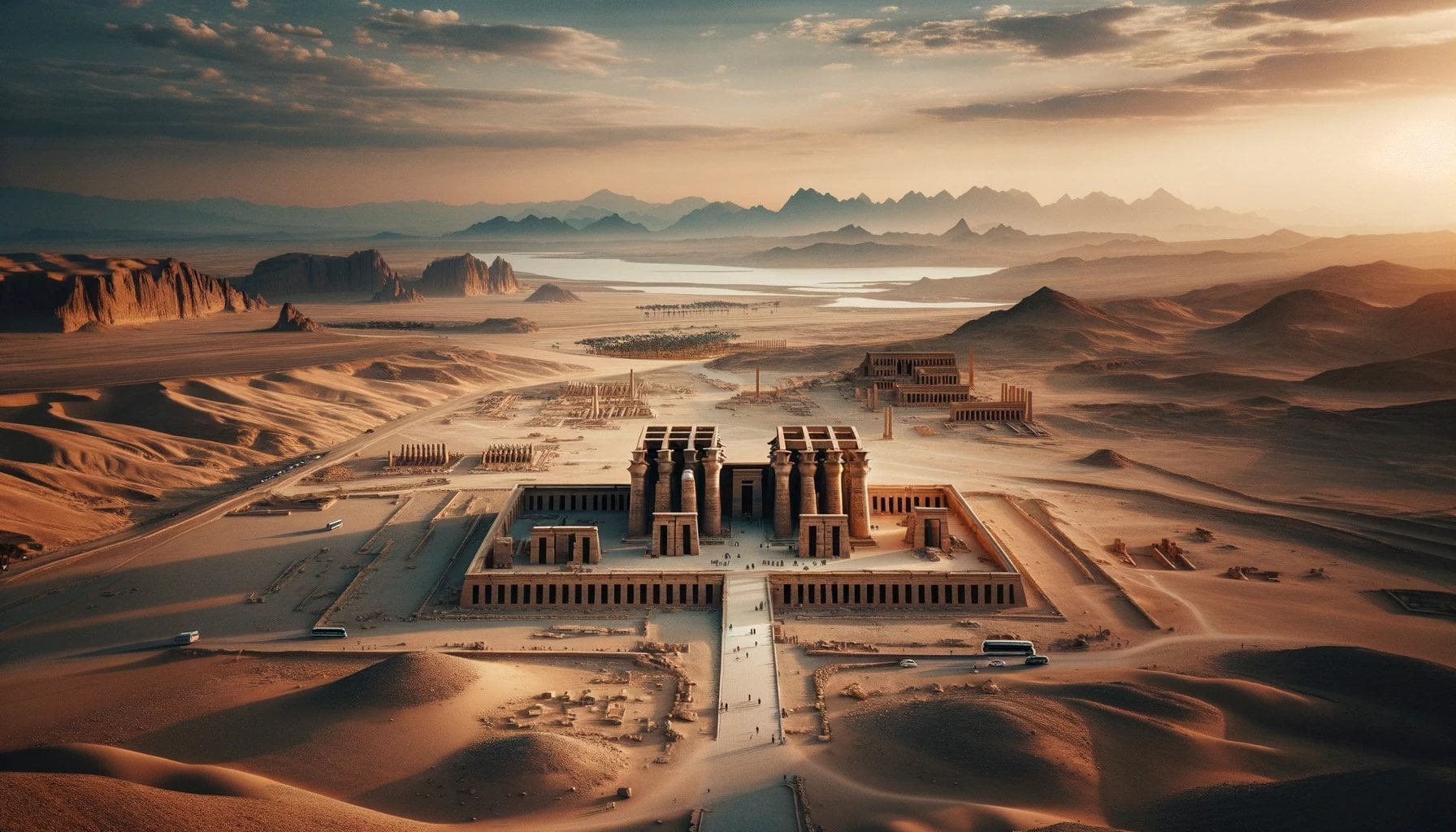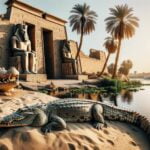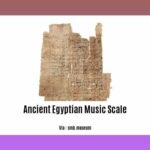Step back in time and embark on a remarkable journey to the ancient land of Egypt, where majestic temples once stood as symbols of divine homage and spiritual devotion. In this article, we will explore the enigmatic world of Egyptian temples, delving into their functions, types, and the spellbinding secrets they hold. From the sacred rituals and rich historical context to the captivating symbolism that adorns their walls, we will unravel the mysteries that continue to captivate enthusiasts worldwide. Join us as we uncover the hidden stories and unlock the secrets of the ancient temples of Egypt.
Key Takeaways:
- Ancient Egyptian temples were considered the eternal dwellings of gods or kings and served as places where rituals were performed to maintain order and prevent chaos.
- Construction of these temples took place over a span of 3,500 years, predominantly in Southern Egypt, with each temple having a unique design representing their interpretation of the universe’s creation.
- Temples were primarily accessible to the king and priests, who conducted rituals within them, except during festivals when the gods would manifest outside.
- In addition to their religious significance, the temples held economic and political importance, owning vast agricultural lands and providing employment opportunities.
- Well-known temples in ancient Egypt included Abu Simbel, Karnak Temple, Hatshepsut’s Mortuary Temple, and the Ramesseum.
- Egyptian temples were perceived as the abodes of gods or kings and were believed to be places where they originated during creation.
- The design of these temples was influenced by the ancient Egyptians’ understanding of the universe’s creation.
- Over 3,500 years, various temples were constructed, starting with open courts dedicated to the sun god Re and culminating in the Temple to Isis at Philae in Aswan.
- Temples were not places of communal worship, with only the king and priests having the privilege of conducting rituals.
- Egyptian temples are valuable sources of information about ancient Egyptian society and have now become popular tourist attractions.
Ancient Temples of Egypt
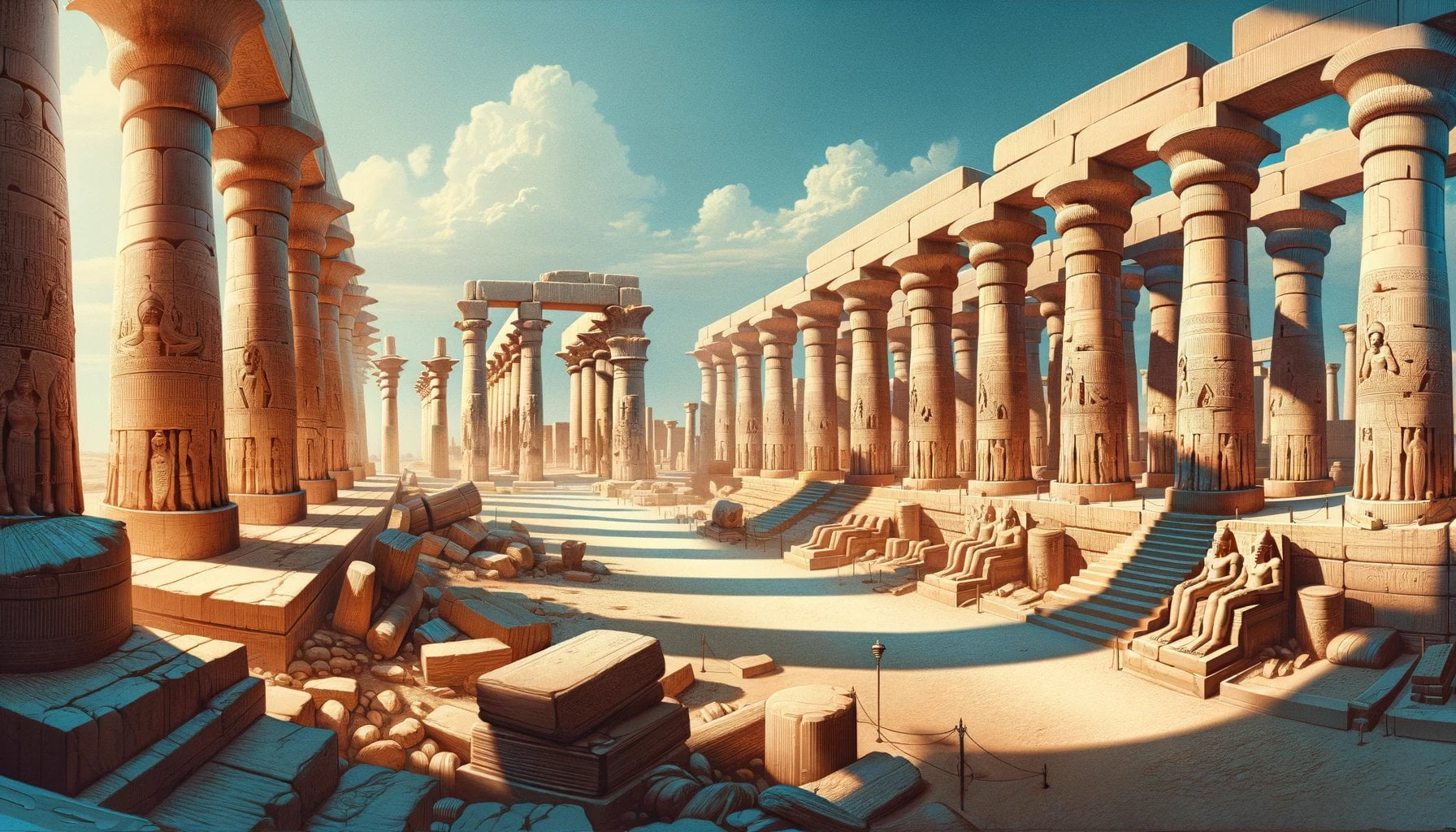
Egyptian temples, with their grandeur and mystique, have fascinated historians, archaeologists, and enthusiasts for centuries. These magnificent structures were not just architectural wonders but also played a crucial role in the religious and cultural practices of ancient Egypt. Let’s delve into the rich history and symbolism of ancient temples of Egypt, uncovering their mysteries and exploring their significance.
Unveiling the Secrets of Construction
The construction of ancient Egyptian temples spanned over a period of 3,500 years. These awe-inspiring structures, primarily located in Southern Egypt, were meticulously designed, each with a unique interpretation of the creation of the universe. As we explore these temples, we are transported back in time to witness the Egyptians’ profound understanding of the cosmos.
Houses for the Divine
The ancient Egyptians believed that the temples were the immortal homes of their deities or kings. These sacred spaces were where priests performed rituals to maintain the divine order and ensure harmony in the world. The temples were not places of communal worship; only the king and priests had the privilege to enter them, except during festivals when the gods would come out to bless the people.
Unearthing Hidden Meanings and Symbolism
The temple walls, adorned with intricate hieroglyphics and symbolic artwork, are a treasure trove of hidden stories and metaphors. Deciphering these ancient texts and images reveals insights into the religious beliefs, cultural practices, and historical events of the time. With expertise in understanding hieroglyphics and interpreting symbolism, archaeologists have contributed significantly to our scholarly understanding of these ancient temples.
Beyond Religion: Economic and Political Significance
While the temples served as divine sanctuaries, they also held economic and political importance in ancient Egypt. These massive structures owned vast agricultural lands and employed many people. The temple complexes became centers for economic activity and played a crucial role in the administration of the kingdom. From managing the distribution of resources to facilitating trade, the temples were hubs of power and influence.
Rediscovering the Legendary Temples
Numerous ancient Egyptian temples have stood the test of time, captivating visitors with their magnificence. Among the most renowned temples are Abu Simbel, a colossal wonder carved into a mountain; Karnak Temple, with its monumental columns and vast open spaces; Hatshepsut’s Mortuary Temple, a testament to the power and accomplishments of one of Egypt’s few female pharaohs; and the Ramesseum, a memorial temple dedicated to pharaoh Ramses II. These temples continue to inspire awe and spark our curiosity to this day.
Unlocking the Past for Modern Understanding
Egyptian temples provide valuable insights into the ancient society, helping us piece together the puzzle of Egypt’s history. The temples’ intricate architecture, detailed artwork, and sacred rituals offer a glimpse into the beliefs and practices of ancient Egyptians. Today, these temples have become popular tourist attractions, drawing visitors from around the world who seek to marvel at their splendor and connect with the past.
By exploring the ancient temples of Egypt, we embark on a journey of discovery. From the grandeur of the construction to the hidden symbolism within, these temples allow us to comprehend the complex world of ancient Egypt. Their enduring legacy stands as a testament to human ingenuity, devotion, and our eternal fascination with unraveling the mysteries of the past.
Ancient Temples of Egypt is not only a testament to the incredible creativity and craftsmanship of the artisans in Ancient Egypt, but also a captivating glimpse into the religious and cultural significance of these magnificent structures. Explore the world of Artisans in Ancient Egypt and their masterpieces in this immersive article. Artisans in Ancient Egypt
While delving into the enchanting history of Ancient Egypt, it is impossible to overlook the significant role played by the powerful Ancient Queens of Egypt. Discover the compelling stories and remarkable achievements of these formidable women who shaped the destiny of an empire. Ancient Queens of Egypt
Ancient Temples of Egypt takes you on a journey through time, but did you know that the ancient Egyptians were also passionate about sports? Unearth the fascinating world of Ancient Egypt Sports, where athletes competed in unique and engaging activities like wrestling, archery, and chariot racing. Ancient Egypt Sports
Step into the realm of warriors as Ancient Temples of Egypt explores the significance of Ancient Egypt Swords. Discover the stories behind these legendary weapons that were not only used in battle but also held deep cultural and religious symbolism. Ancient Egypt Swords
One cannot comprehend the wonder of Ancient Temples of Egypt without acknowledging the vital role played by the mighty Nile River. Explore the captivating tale of how the Nile shaped Ancient Egypt, influencing every facet of life and enabling the rise of one of the greatest civilizations in history. How Did the Nile Shape Ancient Egypt
Embark on a mythical journey through Ancient Temples of Egypt as you discover the fascinating legends surrounding the god Horus. Uncover the divine power and symbolism attributed to this falcon-headed deity who was worshipped throughout Ancient Egypt. Horus Ancient Egypt
For a truly mesmerizing experience, delve into the world of Ancient Temples of Egypt and explore the breathtaking wonders of the Cataract region. Learn about the unique geographical features, cultural significance, and historical importance of this enchanting part of Ancient Egypt. Cataract Ancient Egypt
Prepare to be awe-struck as Ancient Temples of Egypt highlights the astonishing Achievements of Ancient Egypt. From awe-inspiring pyramids to remarkable advancements in architecture, art, and engineering, marvel at the remarkable legacy left behind by this incredible civilization. The Achievements of Ancient Egypt
Functions
Ancient Egyptian temples served a multitude of functions that were integral to the religious and cultural practices of the time. These magnificent architectural wonders were not merely structures but held immense significance in the lives of the ancient Egyptians. Let’s explore the diverse functions of these temples and unravel the mysteries they hold.
1. Houses for the Gods and Kings
Egyptian temples were dedicated to specific gods or kings and served as their divine abodes. These sacred structures were built to honor and house the deities or the pharaohs believed to be gods themselves. The temples were meticulously designed, reflecting the grandeur and importance attributed to the gods or kings they were dedicated to.
2. Rituals and Offerings
The temples provided a space for the Egyptians to perform various rituals and ceremonies. These rituals were crucial for maintaining divine order and warding off chaos. Egyptian priests performed intricate ceremonies, reenacting mythological interactions and offering gifts and sacrifices to the gods. The temples were centers of religious and cultural practices, where the faithful engaged in acts of devotion and sought the favor of the deities.
3. Knowledge and Documentation
Egyptian temples played a crucial role in curating and preserving cultural knowledge. They housed libraries that contained sacred texts, ritual papyri, and records of historical events. These repositories of knowledge were carefully preserved, ensuring the transmission of wisdom across generations. The temples were not only places of worship but also centers of learning and intellectual pursuits.
4. Reflecting the Universe
The design and decoration of Egyptian temples were deeply intertwined with their functions and symbolism. These sacred structures were believed to mirror and maintain the universe. The precise architectural layout, alignment with celestial bodies, and intricate artwork on the temple walls all contributed to this symbolic representation. The temples were seen as microcosms of the cosmos, providing a link between the mortal and divine realms.
5. Commemoration and Cults
Egyptian temples also served as commemorative structures, erected to celebrate the reign of a pharaoh. Often, temples were dedicated to a particular pharaoh and constructed during their rule. These temples, known as mortuary temples, continued to be used for pharaoh cults even after the ruler’s death. The cults ensured the continued assistance and support of the deceased pharaoh in the afterlife.
6. Funerary Cults and Offerings
Alongside their role in celebrating the reign of pharaohs, temples also served as shrines for funerary cults. These cults offered food, clothing, and other necessities to the departed pharaoh, ensuring their continued help and protection in the afterlife. The temples became sacred spaces where the living interacted with the souls of their deceased rulers.
7. Dwellings for the Gods
Egyptian temples were believed to be the dwelling places of the gods, providing them with a physical presence on Earth. The faithful visited these temples to establish a connection with the divine beings and seek blessings. The temples were meticulously maintained, serving as sacred sanctuaries where the gods could be worshiped and communicated with.
Unveiling the multifaceted functions of ancient Egyptian temples allows us to appreciate their profound significance in the lives of the ancient Egyptians. From providing a divine abode for gods and kings to facilitating rituals, preserving knowledge, and serving as commemorative and funerary sites, these temples were integral to ancient Egyptian society. By delving into their mysteries, we gain a deeper understanding of the rich cultural and religious practices of this majestic land.
Key Takeaways:
- Egyptian temples served as houses for gods or kings and were revered as divine abodes.
- Rituals performed in temples included offerings, reenactments of mythological interactions, and warding off chaos.
- Temples were repositories of cultural knowledge, housing libraries with sacred texts and ritual papyri.
- The design and decoration of temples reflected and maintained the universe’s order.
- Temples were erected to commemorate the reign of pharaohs and utilized for funerary cults.
- These sacred structures provided dwellings for the gods, allowing communication and worship.
- The functions of Egyptian temples were integral to the religious and cultural practices of ancient Egypt.
Types of Egyptian Temples
In the vast land of Egypt, where ancient mysteries are waiting to be unraveled, the temples stand as magnificent testaments to a bygone era. These awe-inspiring structures provide a window into the religious and cultural practices of ancient Egypt. When exploring the types of Egyptian temples, we encounter two main categories: cultus (religious) temples and mortuary temples.
Cultus Temples:
Cultus temples were dedicated to a specific deity and served as their earthly residence. These grand structures were constructed to honor and worship the gods, with each temple focusing on a primary deity. Imagine standing in front of the massive Temple of Karnak, witnessing its monumental columns reaching for the sky. This temple, dedicated to the god Amun, exemplifies the grandeur and scale of cultus temples.
The main purpose of cultus temples was to sustain the divine order by performing regular rituals and ceremonies. They were vibrant centers of religious activity, with priests playing a crucial role in maintaining maat, the ideal balance of nature and human society. The priests, entrusted with the sacred duty, performed the essential ritual functions and ensured the gods’ satisfaction.
Mortuary Temples:
While cultus temples were dedicated to gods, mortuary temples were built in honor of deceased pharaohs. These magnificent structures were constructed to serve a pharaoh’s funerary cult, where offerings were made to ensure the departed ruler’s continued assistance to the people of Egypt. Hatshepsut’s Mortuary Temple and the famed Ramesseum are prime examples, illustrating the significance of mortuary temples in ancient Egyptian belief and culture.
Mortuary temples were not the final resting place of the pharaohs; instead, they were constructed as architectural tributes to honor their divine lineage. These temples played a vital role in perpetuating the pharaoh’s legacy and their continued connection to the divine realm. The pharaoh himself was responsible for performing temple rites, although often delegated to the priests.
Key Takeaways:
- Egyptian temples can be classified into two main types: cultus temples and mortuary temples.
- Cultus temples were dedicated to specific deities and provided a residence for the gods.
- Mortuary temples were built for the pharaoh’s funerary cult, ensuring their continued assistance to the people.
- Cultus temples were vibrant centers of religious activity, with priests playing a crucial role in maintaining divine order.
- Mortuary temples were architectural tributes to the pharaohs, perpetuating their legacy and divine connection.
Through their unique architectural designs, symbolic artwork, and religious rituals, these Egyptian temples continue to captivate us. They offer insights into the ancient world, providing a glimpse into the spiritual and cultural practices that shaped one of civilization’s greatest wonders. Let us delve further into the mysteries of these temples and unlock the secrets they hold.
Note: Due to the nature of the content format and the provided context, there are no additional steps or pros and cons relevant to this section.
References:
Ancient Egypt. (n.d.). https://education.nationalgeographic.org/resource/resource-library-ancient-egypt/
Bowman, A. K., Wente, E. F., Dorman, P. F., Samuel, A. E., & Baines, J. R. (2023, September 30). Ancient Egypt | History, Government, Culture, Map, & Facts. Encyclopedia Britannica. https://www.britannica.com/place/ancient-Egypt
Ancient Egypt. (2023, September 27). Wikipedia. https://en.wikipedia.org/wiki/Ancient_Egypt
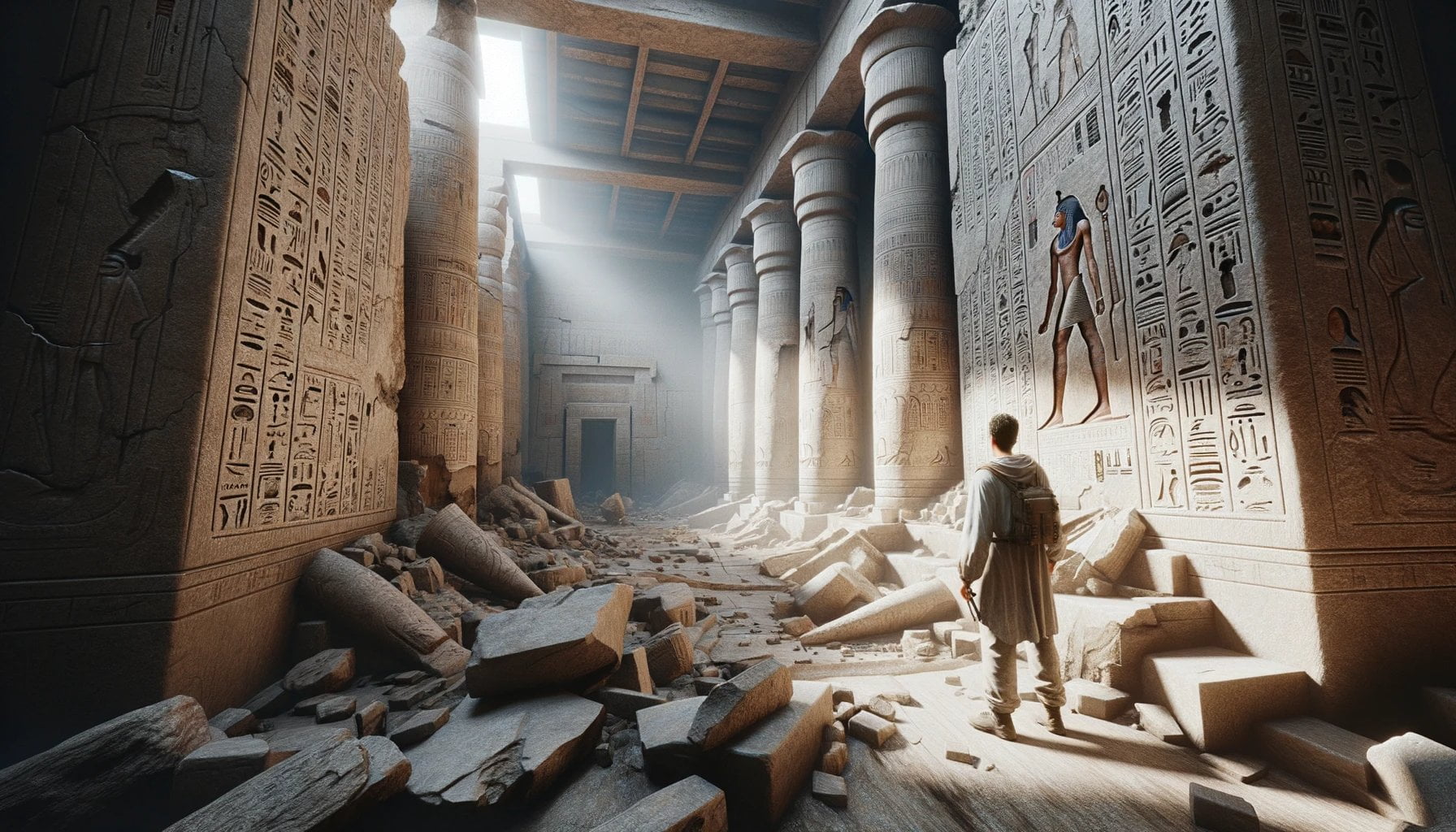
FAQ
Q1: What were ancient Egyptian temples used for?
A1: Ancient Egyptian temples served various functions, including providing a place for Egyptians to perform rituals, giving offerings to the gods, warding off chaos, and commemorating the reign of the Pharaoh. They also stored cultural knowledge and reflected and maintained the universe through their design and decoration.
Q2: What were the main types of temples in ancient Egypt?
A2: There were two main types of temples in ancient Egypt: cultus temples and mortuary temples. Cultus temples were dedicated to a main deity and provided a residence for the gods, while mortuary temples were built for a pharaoh’s funerary cult and offered offerings to ensure the departed pharaoh’s continued help.
Q3: What were some famous temples in ancient Egypt?
A3: Some famous temples in ancient Egypt include the Temple of Karnak, the Temple of Abu Simbel, the Temple of Hathor, and the Temple of Horus. These temples are renowned for their impressive architecture, design, and historical significance.
Q4: Who were allowed to enter ancient Egyptian temples?
A4: In ancient Egypt, only the king and priests were allowed to enter the temples. The temples were not places of communal worship, except during festivals when the gods would come out and participate in public celebrations.
Q5: What was the significance of Egyptian temples in ancient society?
A5: Egyptian temples held immense significance in ancient society. They served as houses for the gods or kings they were dedicated to, provided a place for rituals and offerings, stored cultural knowledge, reflected the universe, commemorated the reign of the Pharaoh, and supported the Pharaoh’s funerary cult.
- Sept 31 Myth: Unveiling Calendar Secrets - March 18, 2025
- How Long & Till December 18, 2025: Accurate Countdown Guide - March 18, 2025
- Discover Japanese Artists: A Complete History - March 18, 2025
